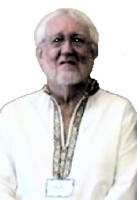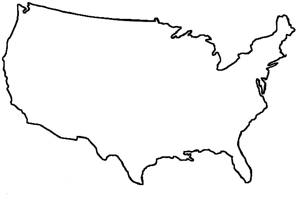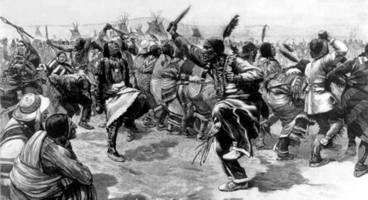
|
The Society of Folk Dance Historians (SFDH)
Native American Dance Traditions
[
Home |
About |
Encyclopedia | CLICK AN IMAGE TO ENLARGE |

|
NATIVE AMERICAN DANCE
 Reports from the early European invaders of the New World describe the indigenous peoples dancing. Repeatedly. To the newcomers, dancing appeared to permeate the daily lives of peoples of all tribes. Some dances involved only men, moving proudly or fiercely around the performance area. Others consisted of concentric circles of women and men, each with their own gender–specific step.
Reports from the early European invaders of the New World describe the indigenous peoples dancing. Repeatedly. To the newcomers, dancing appeared to permeate the daily lives of peoples of all tribes. Some dances involved only men, moving proudly or fiercely around the performance area. Others consisted of concentric circles of women and men, each with their own gender–specific step.
The Europeans' descriptions of what they witnessed varied with the cultural lenses they used. Some of the dancing was reported as being done by handsome people, dressed in interesting clothing, who moved with grace and dignity to unusual sounds. Traditions to be appreciated and encouraged. More often newcomers saw savagery in the sometimes immoral, unchristian leaps and jumps of indecently–clad people, accompanied by irritating animal–like cries. A practice to be denounced.
For centuries, few, if any, noteworthy events in Native American life have been unaccompanied by dancing in attire specific to that dance, usually involving animal skins, feathers, beads, facial paint. The life cycle – birth, arrival of puberty, marriage, death – called forth tribal dances to the sounds and rhythms of drums, flutes, rattles, whistles, clapping, singing.
There were dances to ensure good results in the forthcoming hunt and to celebrate its subsequent success. Supplications to the Great Spirit prior to planting and thanksgiving after harvest were cloaked in dance. Medicine dances were offered for healing of the sick. A new tribal chief would be welcomed by dance. Dances mimicking animals were common to honor the fellow creatures who participated with humans in "the circle of life." Experiencing an especially vivid dream which seemed to contain a message for the community could lead the dreamer to deliver his vision through dance.
 Particular times of the year were celebrated by dance in different parts of the country: in the East, annual strawberry dances; North, dances to acknowledge the arrival of winter; on the Plains, Buffalo Dance; Southwest, rain dances. In the Northwest there were periodic Echo Dances designed to confuse the malevolent spirits that lurked in the ubiquitous forest.
Particular times of the year were celebrated by dance in different parts of the country: in the East, annual strawberry dances; North, dances to acknowledge the arrival of winter; on the Plains, Buffalo Dance; Southwest, rain dances. In the Northwest there were periodic Echo Dances designed to confuse the malevolent spirits that lurked in the ubiquitous forest.
Given the realities of Native American life from the 1500's to the late 1800's – intertribal wars, battles to attempt to fend off ever-increasing interlopers – War Dances were frequent. Some dancers wore buckskin suits and feather headdresses; others were garbed in breechcloths and their faces and bodies were brightly painted. Bent low, they searched the ground for telling signs. At times, to the accompaniment of whoops and yells, they bandied their weapons, and illustrated their prowess to the admiring audience. Although primarily a men's dance, there might be a few women who had actively participated in previous skirmishes, and they would be included. After a good battle outcome would come several days of mourning for the lost followed by a Victory Dance or a Scalp Dance showing off one's trophies. In some tribes the Scalp Dance was performed mostly by women who donned men‘s clothes and carried men's weapons.
Appreciation for Mother Earth and her blessings was frequently woven into the fabric of a dance. Some dances were explicitly focused on supplications to the Great Spirit. In the late 1800's several religious systems, accompanied by intricate, days-long rituals, were promulgated by indigenous prophets, given the name Dance, and practiced widely. They predicted the resurgence of Native Americans along with the decline of Whites. One of the most comprehensive and widely adopted was built upon the visions of a man who called himself Messiah. Named the Ghost Dance, his message and practices became influential in several tribes, but after a few years, with opposition from the United States government and church authorities, and its prophecies unfulfilled, the movement died away.
The Sun Dance was another program of ceremonies and rituals that was practiced in the summer by a number of tribes throughout the 1800's. The dance component consisted of moving in place while an eagle-wing bone whistle blew in rhythm with a drum and singers sang praises and directed requests to the Sun and other "holy powers."
THE ATTACK ON NATIVE AMERICAN DANCE
With the Massacre at Bull Run in 1890, the Indian Wars ceased and the United States Government undertook a campaign to erase Native American culture – to make indigenous peoples "civilized," i.e., like Whites. An important element of the program was the attempt to eradicate Native American dance. Agents of the Bureau of Indian Affairs were encouraged to ban dancing by the inhabitants of the reservations they managed. Penalties for disregarding a ban could be as serious as imprisonment. Yet the Dance continued. (A similar effort was made by the Canadian Government.)
Concurrent with the Government's extinguishment program, private enterprise, under the format of Wild West Shows, was displaying Native American dance to enthusiastic audiences. Buffalo Bill Cody and Pawnee Bill roamed the United States with their troupes and supple Native Americans found well-paying jobs with them. Being on display, they were encouraged to liven up their traditional dances. It was not until 1933 that a new Director of the Bureau of Indian Affairs eliminated the effort to wipe out indigenous dancing.
POW WOW
In recent decades (until the Pandemic arrived), the Pow Wow has been a major vehicle for Native American dance. At first a summer event, it now occurs year round. Its format may be a day-long singing and dancing event, or a weekend-long mini-fair with food and merchandise sales, fashion shows, midway rides, and dance exhibitions. The Pow Wow, drug and alcohol free, attracts participants from all tribes and from well outside its locale, along with Native Americans and Whites as spectators.
The Drum, the source of music for a Pow Wow, usually consists of five or six drummers, a few instrumentalists, and a group of singers. When the Pow Wow is held in a large arena it is stationed along one side, leaving the central area for dancers. If the Pow Wow is held in a large field, the Drum will be in the center and dancers will perform in a circle around it.
At the start the performing area will be blessed by a tribal leader. The Grass Dance, an age old Native American dance will likely then be presented. The dancers bow low to the ground, bounce on one foot while dragging the other foot out and around the body and tapping it on the ground (sometimes referred to as "flattening the grass"). At first only men who had been initiated into the Grass Dance Society were allowed to perform; now it is open to anyone wearing a native costume.
A grand opening parade will be led by veterans of the United States military carrying the American flag, followed by tribal leaders, and honorees. The colorfully adorned dancers, most of whom have been dancing since childhood, will enter and a series of dances, some all women, some all men, some mixed will take place. A portion of the dances will be inter-tribal using steps common to all tribes. Others will be specific to a particular tribe. There is one basic rule for Pow Wow dance performances: whether the dance is patterned or free form, slow and gentle, or fast and vigorous, dancers must be in sync with the rhythms of the Drum.
Out of the vast array of Native American dances, the following six are Pow Wow favorites, performed by dancers grouped by their age.
- Men's Traditional Dance: a slow to moderate progression around the dance area usually composed of steps, taps, and hops. The dancer may incorporate bodily movements to illustrate life events such as a hunt. A dance for men of all ages.
- Women's Traditional Dance: Some dancers will bounce in place. Others will walk straight ahead or zig&-zag around the circle keeping one foot on the ground at all times to illustrate their connection to Mother Earth.
- Men's Fancy Dance: Fancy means fast, vigorous, free form, with lots of leaping, turning, splits. Considerable endurance is required for the dance will last a long time and will accelerate at the end. A dance primarily for young men.
- Women's Fancy Shawl Dance. With arms fully extended, dancers display their large, colorful, ornate shawls as they dance energetically in their dance space.
- Women's Jingle Dress Dance. A legend tells of a medicine man with a very ill granddaughter whom he could not heal. In a dream four women appeared wearing dresses covered with objects which jingled as they danced. The medicine man made a similar dress for himself, replicated their dance before his granddaughter. She was cured. Today jingle dresses are festooned with metal cones. The dance is considered a healing dance and often its dancers will have a particular person in mind to whom their healing efforts are directed.
- Man's Prairie Chicken Dance (not the Chicken Dance we know): The springtime maneuvers of a courting chicken are put on entertaining display. Participants report that the dance is very challenging because of the many contortions required.
Videos of these dances are available on the Web. In watching, keep in mind the hoary folk dance saying: "That's how it's done in my village (tribe)."
Today the Hoop Dance may be performed as an exhibition by one dancer who manipulates a dozen or more large hoops with a series of spell-binding maneuvers. (Camille and I witnessed an impressive presentation of this dance at the Gene Autry Museum.)
The day's agenda may include Round Dancing in which a circle of men and their (usually) unattached partner dance beside each other around the grounds.
The introduction of dancing contests, with cash prizes, a few years ago, opened the opportunity for some of the more talented dancers to create a "Pow Wow Circuit" in which they and their families travel – even year round – to one Pow Wow after another, sustaining themselves on their contest winnings.
Once COVID-19 is history you will be able to attend a Pow Wow as a spectator.
In the literature describing Native American Dance are numerous comments by dancers elucidating what performing their dances means to them. Two themes recur: Through them I feel connected – to my family, to my ancestors, to my Creator. Dance is a powerful way to display the pride that I have in being me.
SOURCES
- Tara Browner, Heartbeat of the People, 2002
- Charlotte Heth, ed., Native American Dance: Ceremonies and Social Traditions, 1992
- Adolph Hungry Wolf, Pow-Wow, Dancer's and Craftworker's Handbook, 1999
- Reginald & Gladys Laubin, Indian Dances of North America, 1977
- Ben & Linda Marra, Faces from the Land: Twenty Years of PowWow Tradition, 2009
- Jacqueline Shea Murphy, The People Have Never Stopped Dancing, 2007
- John-Carlos Perea, Intertribal Native American Music in the United States, 2014
- Karan Pheasant-Neganigware, Powwow, a Celebration through Song and Dance, 2020
Many thanks to Kascia Samel, librarian at the American Indian Resource Center, Huntington Park Branch, Los Angeles County Library, for assistance in locating resources.
Used with permission of the author.
Printed in Folk Dance Scene, Vol. 57, No. 8–9, October–November, 2021
This page © 2018 by Ron Houston.
Please do not copy any part of this page without including this copyright notice.
Please do not copy small portions out of context.
Please do not copy large portions without permission from Ron Houston.